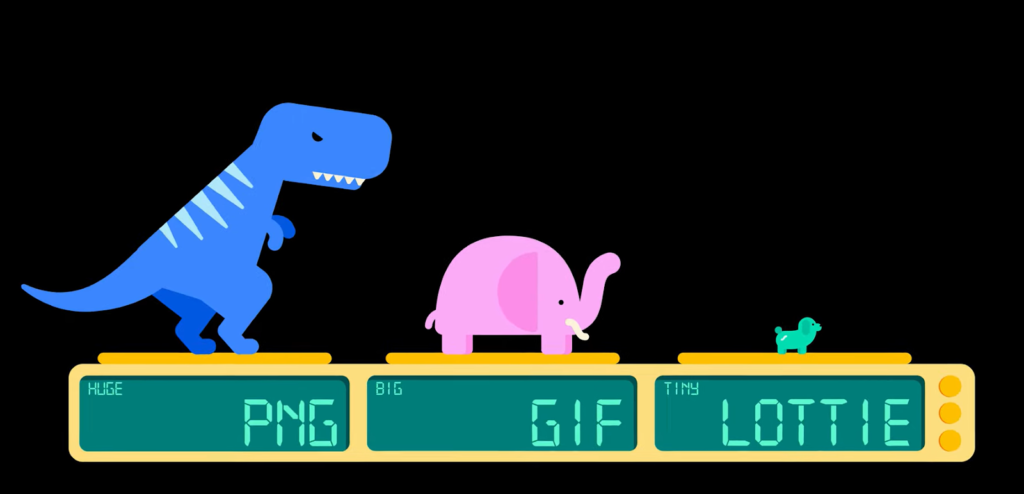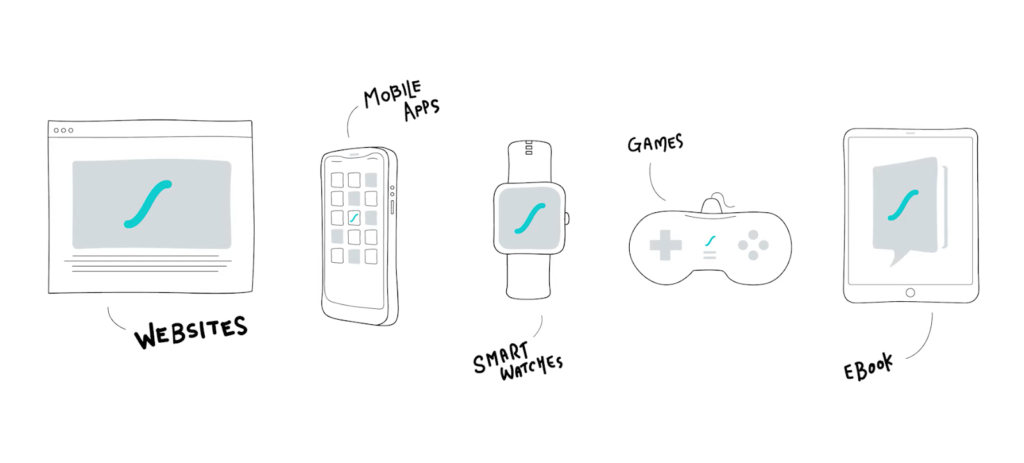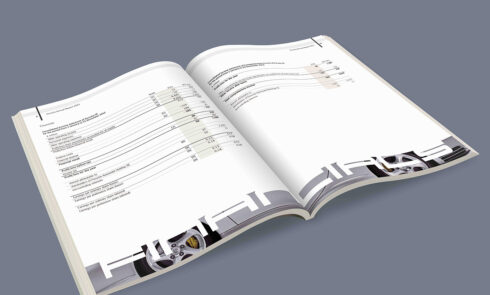Over the years, web graphics have evolved from JPEGs to GIFs to PNGs, becoming an integral part of online content. Despite their prevalence, traditional formats frequently fall short in delivering high-quality animations. This is where Lottie animations come into play, offering a solution that elevates the standard of web-based animations.
Understanding Lottie Animations
Lottie animations represent a JSON animation file format utilized across web and mobile platforms, as well as in eBooks, games, and various digital media forms. Surprisingly, these animations emerged from a collaboration between engineers and animators at Airbnb, showcasing the company’s innovative approach beyond its traditional domain. Lottie files distinguish themselves from conventional image formats through their compact size, interactivity, and ability to be scaled without distortion, making them adaptable across different platforms and devices.
What sets Lottie files apart is their consistent high-quality output, regardless of the export platform or device. They seamlessly integrate into Android, iOS, web, and React Native environments without requiring any modifications, offering users the convenience of customization even without coding knowledge. Despite being code-based, Lottie animations present a user-friendly solution accessible to a wide audience. How do Lottie animations compare to other image formats like GIFs? Let’s delve into a detailed comparison to better understand their advantages and limitations.
The Downside of GIFs: Limitations of an Outdated Format
GIFs have become an integral part of internet and meme culture, despite their humble beginnings 35 years ago. Initially created as a means to compress images without sacrificing too much quality, GIFs were limited to 8-bit files with a palette of only 256 colors due to technological constraints.
- Despite their widespread use, GIFs suffer from antiquated compression techniques that result in blurry or grainy images when scaled. Being raster files composed of pixels and frames, GIFs tend to lose quality when zoomed in, revealing pixelation and distortion;
- Moreover, GIFs lack customization options due to their adherence to the same 8-bit format since their inception in 1987. In an era of technological advancements, the limitations of GIFs are more apparent, with their perpetual loops and low-quality visuals falling short of contemporary standards;
- Another drawback of GIFs is their large file sizes, consuming excessive bandwidth and leading to longer loading times. This poses challenges for integrating larger animations into websites, mobile apps, and social media platforms, ultimately impacting user satisfaction.
Comparing Lottie and GIFs: Size, Speed, and Quality

How do Lottie files stack up against GIFs? To begin with, Lottie files are a fraction of the size of GIFs, making them faster to load and reducing disk space usage. This efficiency not only improves download speeds but also enhances conversion rates. Moreover, Lottie animations can be scaled without any loss in quality, thanks to their vector-based nature. Unlike GIFs, which are limited by their pixel-based structure, Lottie animations maintain crispness and smoothness even when zoomed in or out.
Another key advantage of Lottie animations is their customizability. Users have the flexibility to adjust animation speed, alter background colors, and edit individual layers even after the animation is exported as a JSON file. In contrast, once a GIF animation is finalized, it cannot be modified.
Creating Your Own Lottie Animation
Interested in crafting your own Lottie animation? Fortunately, the process is straightforward, regardless of your technical expertise. There are two primary methods:
- Access Free Resources Online: This method is ideal for those who prefer a quick and easy approach. Numerous online platforms offer a vast collection of pre-made Lottie animations created by talented designers worldwide. Websites like LottieFiles and Iconscout provide a diverse range of animations suitable for various purposes, including social media, web, and mobile apps;
- Utilize Adobe After Effects: For designers or individuals familiar with Adobe software, creating custom illustrations and animations using Adobe After Effects is an excellent option. This approach allows for complete creative control, enabling users to develop unique animations from scratch.
How to Create Lottie Animations
To begin, ensure you have the necessary tools. Download the Bodymovin plugin, an After Effects extension essential for exporting animations into JSON files. Alternatively, consider using the LottieFiles plugin, offering additional features and compatibility. Additionally, explore the LottieFiles app for streamlined animation sharing and testing on mobile devices.
Step 1: Design Your Graphics
Start by creating your design using Adobe Illustrator or Sketch, depending on your preference.
Step 2: Animate Your Illustration
Animate your design in After Effects, keeping in mind that certain features may not be supported. Refer to the list of supported features to ensure compatibility.
For detailed instructions on After Effects, refer to online tutorials available from various creators.
Step 3: Export Your Animation
Utilize either the Bodymovin plugin or the LottieFiles extension to export your Lottie animation. Before exporting, adjust settings in the drop-down menu to customize the output according to your preferences.
Note: It’s essential to use a plugin or extension to export Lottie animations. Without these tools, you won’t be able to create Lottie files. Ensure you have an animated graphic ready for export as a JSON file to produce a Lottie animation successfully.
The Advantages of Utilizing Lottie Files
In the not-so-distant past, creating animations was a cumbersome process. Traditional motion designers would hand off their creations to software developers, who would painstakingly bring them to life manually.
While the average user might not give much thought to the process behind GIF creation, professionals in design, development, and digital marketing are constantly seeking ways to produce high-quality, scalable, and interactive animations without sacrificing user experience. This doesn’t mean abandoning GIFs entirely, but rather recognizing the demand for sharper, smoother animations that align with current technological and user expectations.
In an era where images, videos, and animations drive audience engagement, it’s time to reconsider outdated animation formats. Let’s prioritize contemporary design techniques and embrace tools like Lottie Files to enhance digital experiences for our users.
Applications of Lottie Animations: Where to Implement

While traditional web graphic animations may have their place, low-quality animated images often appear out of sync with modern digital content. In contrast, Lottie files offer numerous advantages over conventional image formats, making them suitable for a wide range of applications.
Let’s think outside the box. Consider incorporating Lottie animations into articles, email newsletters, presentations, mobile apps, or interactive infographics. The possibilities are endless, extending beyond memes and traditional media.
Here are just a few innovative ways to leverage Lottie animations:
- Enhance social media and video platform interactions with animated reactions;
- Create scalable animated stickers for messaging apps;
- Add dynamic animations to smart products like TVs, appliances, and watches.
Compact yet powerful, Lottie files are revolutionizing the design landscape.
Insights into Lottie Animations: 6 Key Points
| Aspect | Description |
|---|---|
| Compatibility | Lottie animations function seamlessly on multiple platforms, including Android, iOS, web, and React Native, with no modifications needed. |
| Scalability | Lottie animations can be scaled at runtime without losing quality or experiencing pixelation. |
| File Size | Lottie animations have significantly smaller file sizes compared to GIFs, PNGs, and JPEGs. |
| Customizability | Lottie animations are easily customizable, enabling adjustments to background color, layer hues, motion speed, and more. |
| Quality Output | Lottie animations consistently deliver high-quality visuals by combining vector and raster elements. |
| Accessibility | Lottie animations are accessible through online resources like LottieFiles and Iconscout. Custom animations can also be created using Adobe After Effects, with export facilitated by plugins like Bodymovin and/or LottieFiles. |
Conclusion
The advent of Lottie animation has revolutionized the domain of web graphics. It focuses on enhancing the user experience by providing high-quality animations that are compact and highly scalable. By enabling customization and offering compatibility across various platforms, Lottie stands out as a valuable tool in the ever-evolving landscape of digital design and marketing. Its usability extends beyond just being a novelty, seeping into the realm of practical application, thereby making it an essential component in the toolkit of designers, developers, and digital marketers.

